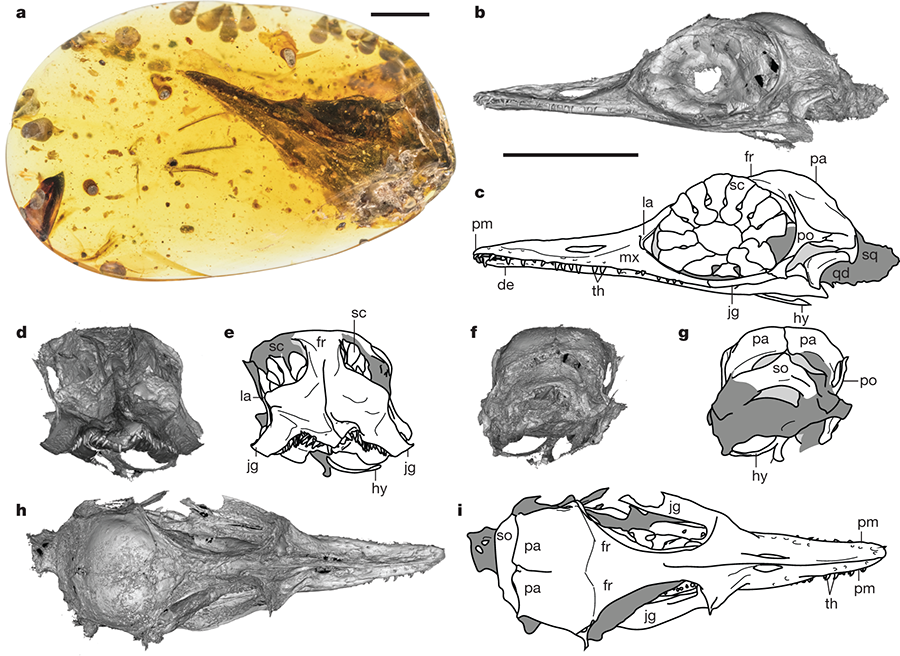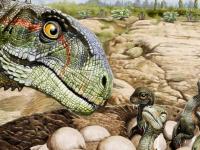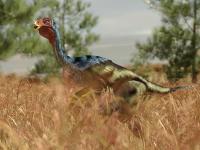Hummingbird-Size Dinosaur May Actually be a Lizard

The jury's still out until another specimen of the species gets analyzed.
A fossil attributed to a teensy, feathered dinosaur may not be a dinosaur at all, but rather a ... lizard, according to new research. With the new criticism, the March study — titled "Hummingbird-sized dinosaur from the Cretaceous period of Myanmar" was retracted yesterday (July 22) from the journal Nature where it had been published, according to a statement in the journal.
The creature’s 99 million-year-old skull was entombed in amber when scientists discovered it in a mine in Myanmar (formerly Burma), and while the creature was somewhat of a weirdo with its bird-like head and roughly 100 super-sharp teeth, researchers concluded this was likely the smallest dinosaur ever found. (It likely weighed just 0.07 ounces (2 grams), the weight of two dollar bills, Live Science previously reported.)
Whether the animal (Oculudentavis khaungraae) was a bird-like dinosaur or a lizard, that doesn’t negate the finding's importance, the study’s scientists say. "It's just a really weird animal and an important discovery regardless of whether it's a weird bird or a weird lizard with a bird head," study co-lead researcher Jingmai O'Connor, a senior professor of vertebrate paleontology at the Chinese Academy of Sciences, told Live Science in an email.
One study posted on bioRxiv, a preprint database where studies are “published" before they undergo review by science peers, posits that the specimen is a lizard. In this new study, Zhiheng Li, from the Institute of Vertebrate Paleontology and Paleoanthropology at the Chinese Academy of Sciences, and colleagues looked back through the computed tomography (CT) scans of the little animal. They found several features of the animal that contradicted the idea of a bird-like dinosaur and said that it aligned much better with lizard traits. These included features of the animal’s lizard-like teeth and the features on its fenestra, or the openings in the skull behind the eye sockets that are found in animals such as dinosaurs and lizards.

O'Connor and her colleagues posted their response, also on bioRxiv, saying that while they "welcome any new interpretation or alternative hypothesis," of the creature, this new research "failed to provide conclusive evidence for the reidentification." However, O'Connor did tell Live Science that "I do think we were wrong and that Oculudentavis is a lizard, not a bird — you just can't prove it unequivocally with the available evidence."
So, the jury is still out on the creature’s true identity. Another team of researchers (different from the bioRxiv group) is studying a different specimen of the same species, but they have yet to publish their findings. If the creature is, in fact, a lizard, the fossil could represent a "new and strange instance of convergent evolution between widely disparate reptile groups," O'Connor said. (Convergent evolution occurs when two organisms that are not closely related evolve similar traits. In this case, the creature had a bird-like head.)
O'Connor noted that she had tested whether the specimen was a bird or a lizard in a phylogenetic, or family tree, analysis, that included several fossil birds. "As long as any other birds were included in the analysis, Oculudentavis was resolved as a bird," O'Connor said. "Removal of all birds made it resolve as a lizard but also caused major reptile clades to collapse, showing just how weird the specimen is."
In addition, O'Connor said that Burmese amber is known to preserve hummingbird-size birds that lived during the Cretaceous period (145 million to 65 million years ago) in what is now Myanmar. However, it's possible this creature wasn't among them, she said.
The Society of Vertebrate Paleontology (SVP) published a letter in April (a month after the original Nature study came out) asking that its members refrain from using Burmese amber collected in or exported from Myanmar since June 2017, because profits earned from selling this amber might fuel the country's decades-long civil war, according to a 2019 piece published in Science magazine. However, the piece that O'Connor and her colleagues examined was found in 2016.
Originally published on Live Science.








